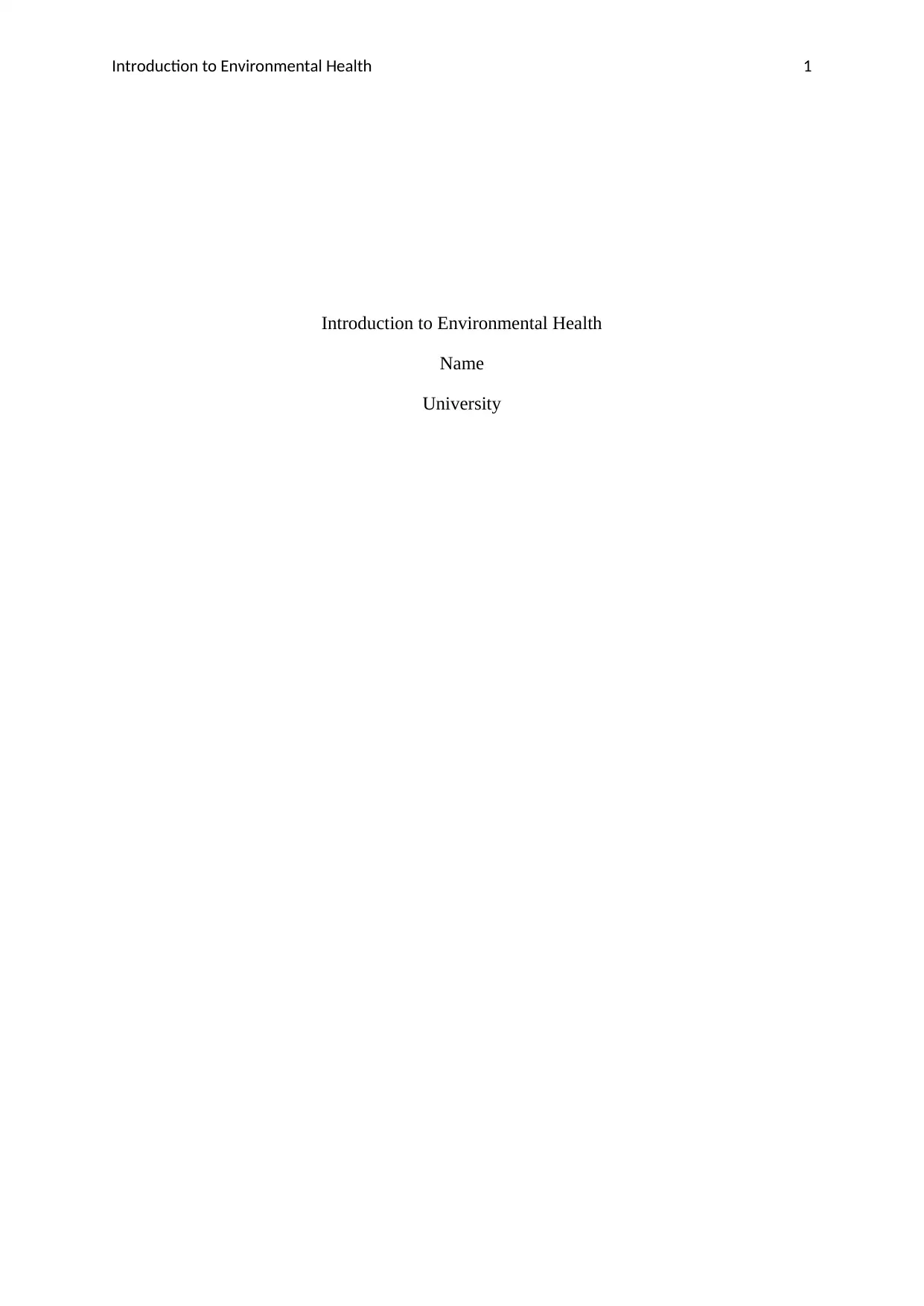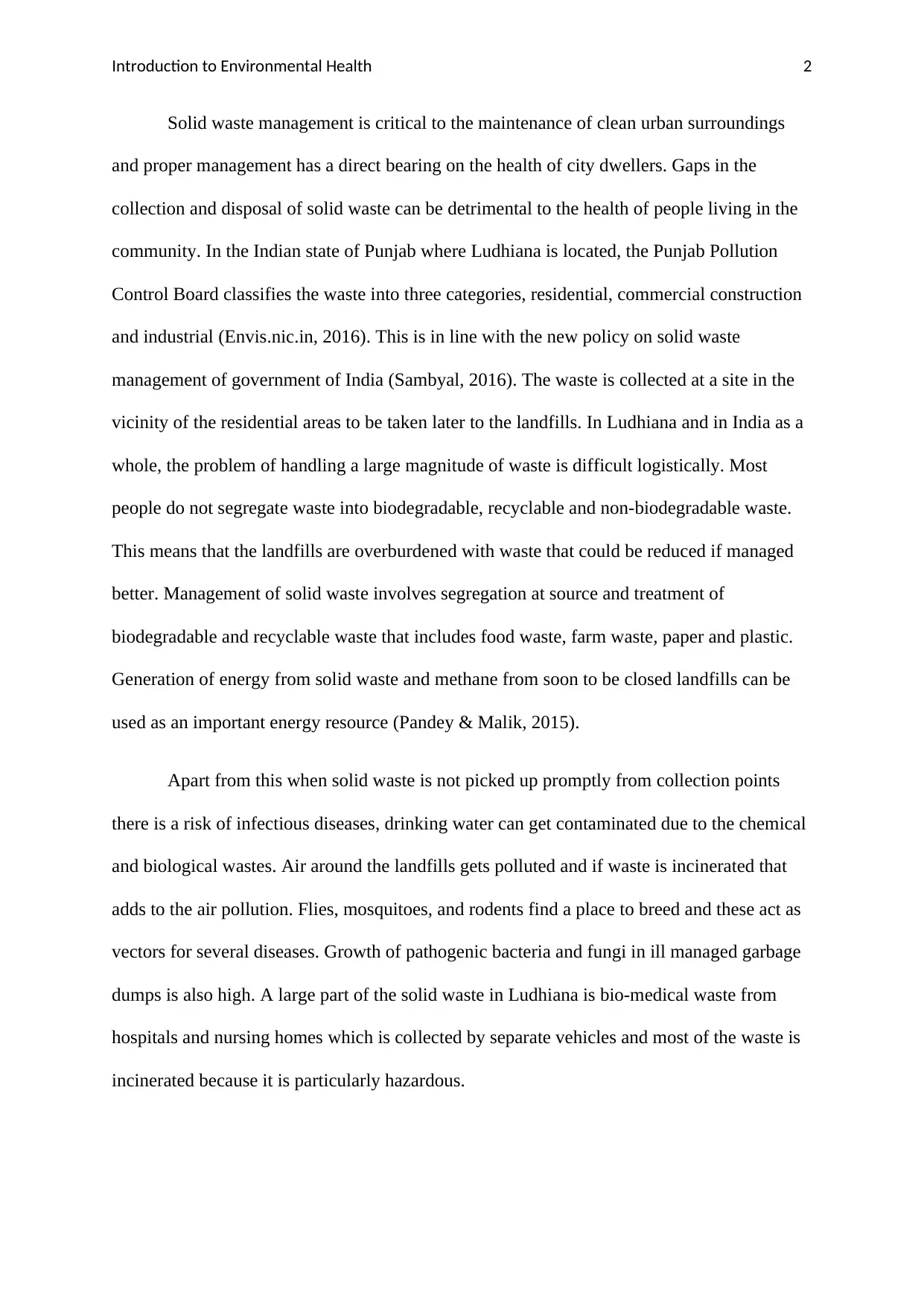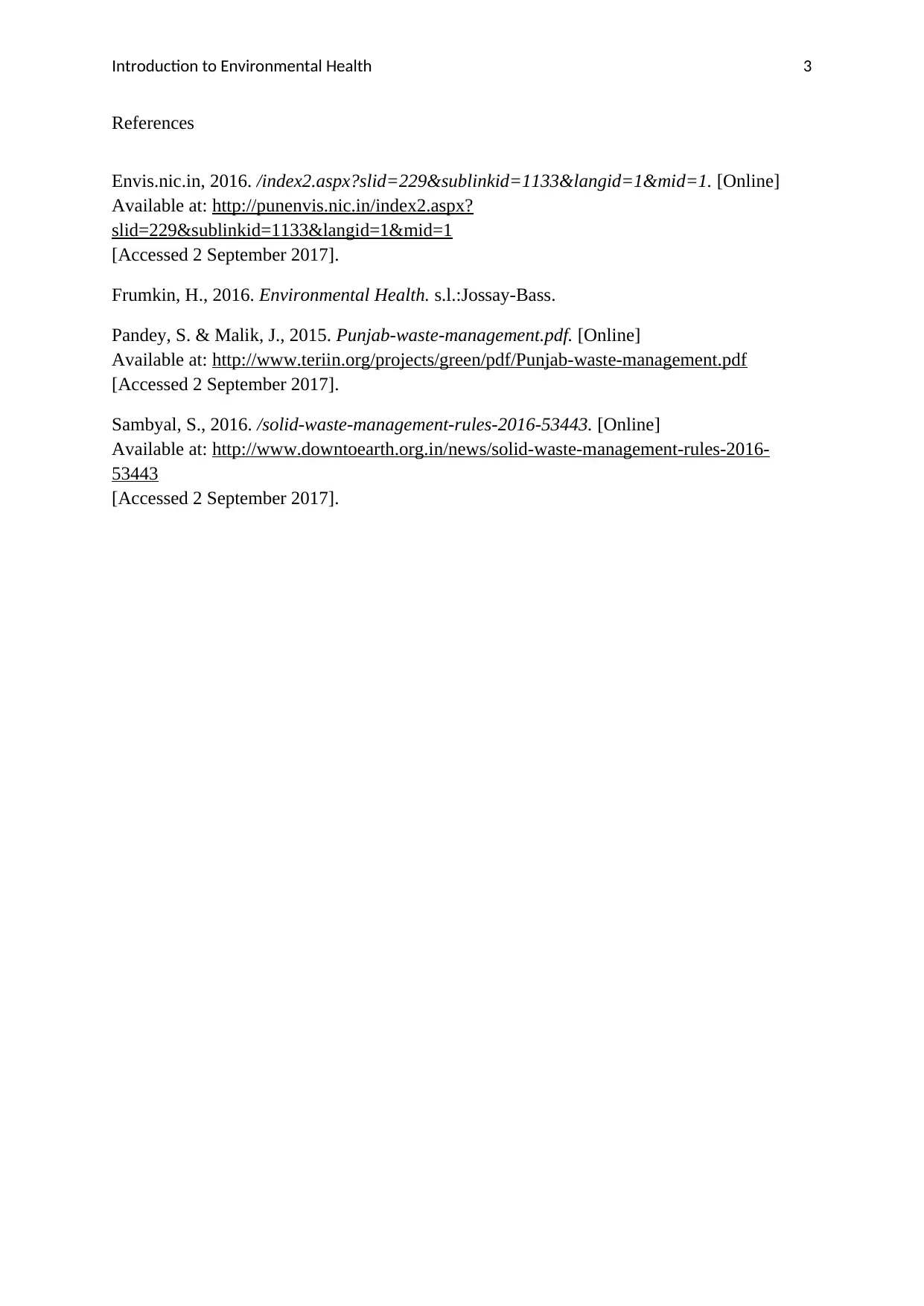A Report on Solid Waste Management and Public Health in Ludhiana
VerifiedAdded on 2020/02/24
|3
|476
|46
Report
AI Summary
This report analyzes solid waste management practices in Ludhiana, India, focusing on its impact on environmental health. It highlights the challenges of waste segregation, the burden on landfills, and the resulting health risks associated with improper waste disposal. The report references the Punjab Pollution Control Board's classification of waste and the importance of adhering to new solid waste management rules. It also discusses the generation of energy from solid waste and the potential for contamination of drinking water and the spread of infectious diseases. The report emphasizes the need for improved solid waste management to mitigate the negative impacts on public health and the environment. The presence of bio-medical waste is also highlighted, which is collected separately and incinerated due to its hazardous nature.
1 out of 3







![[object Object]](/_next/static/media/star-bottom.7253800d.svg)